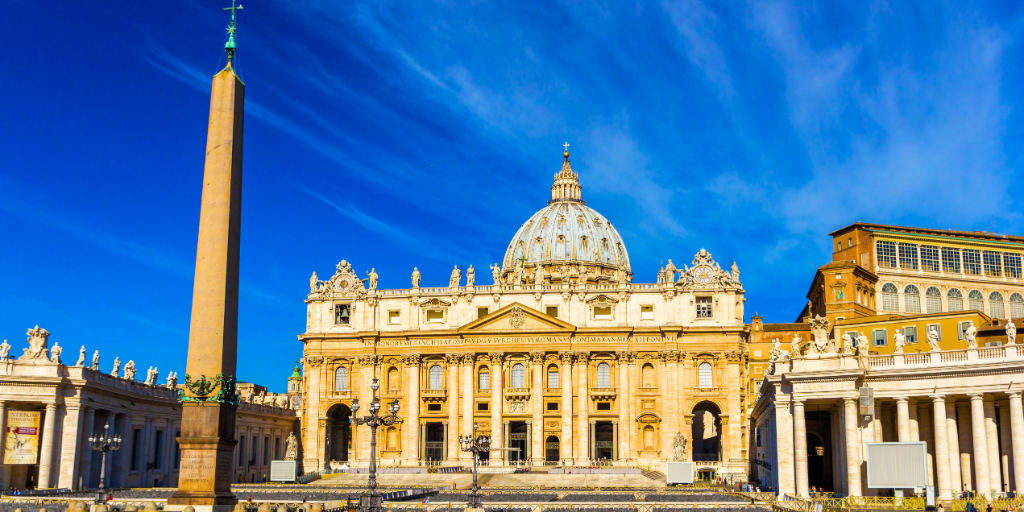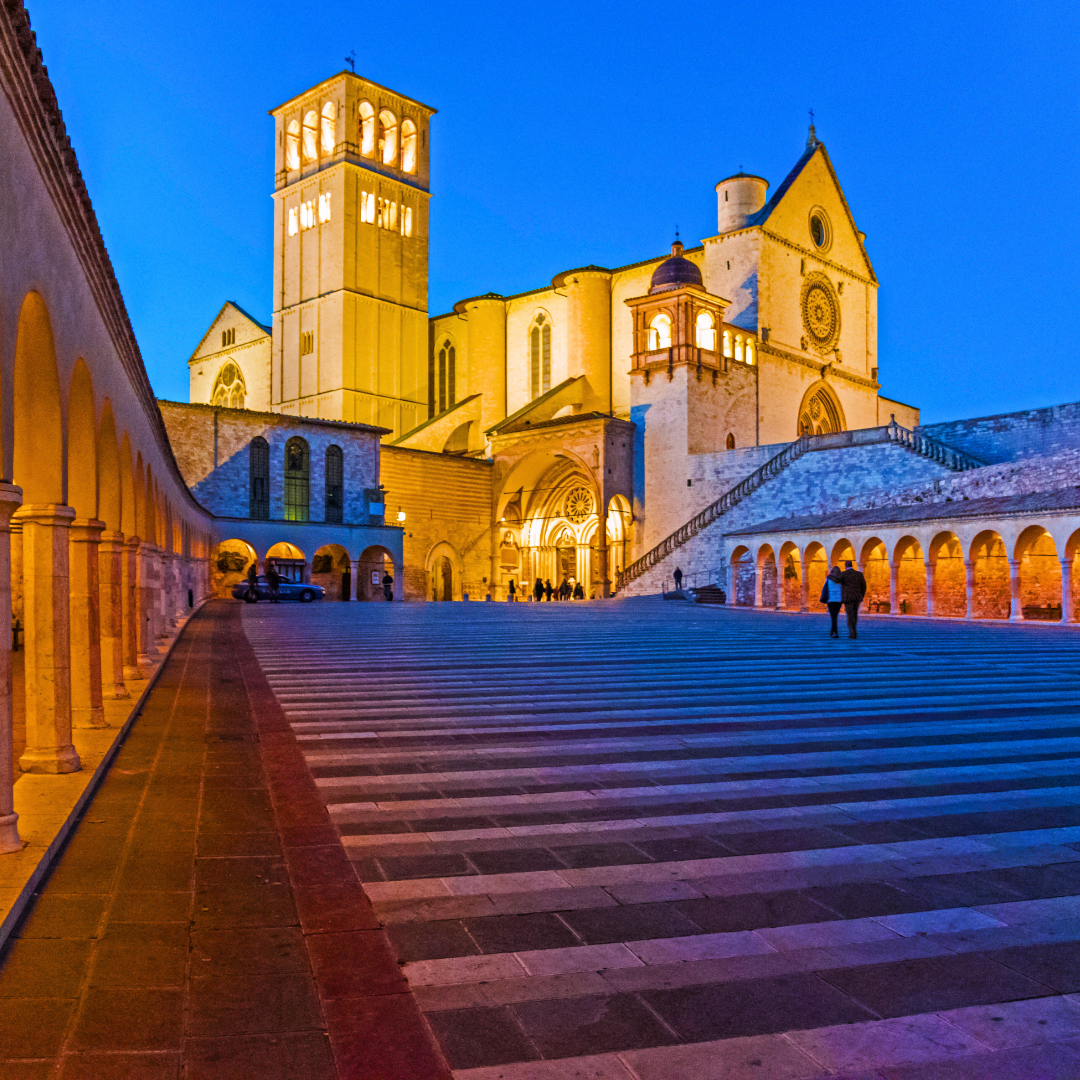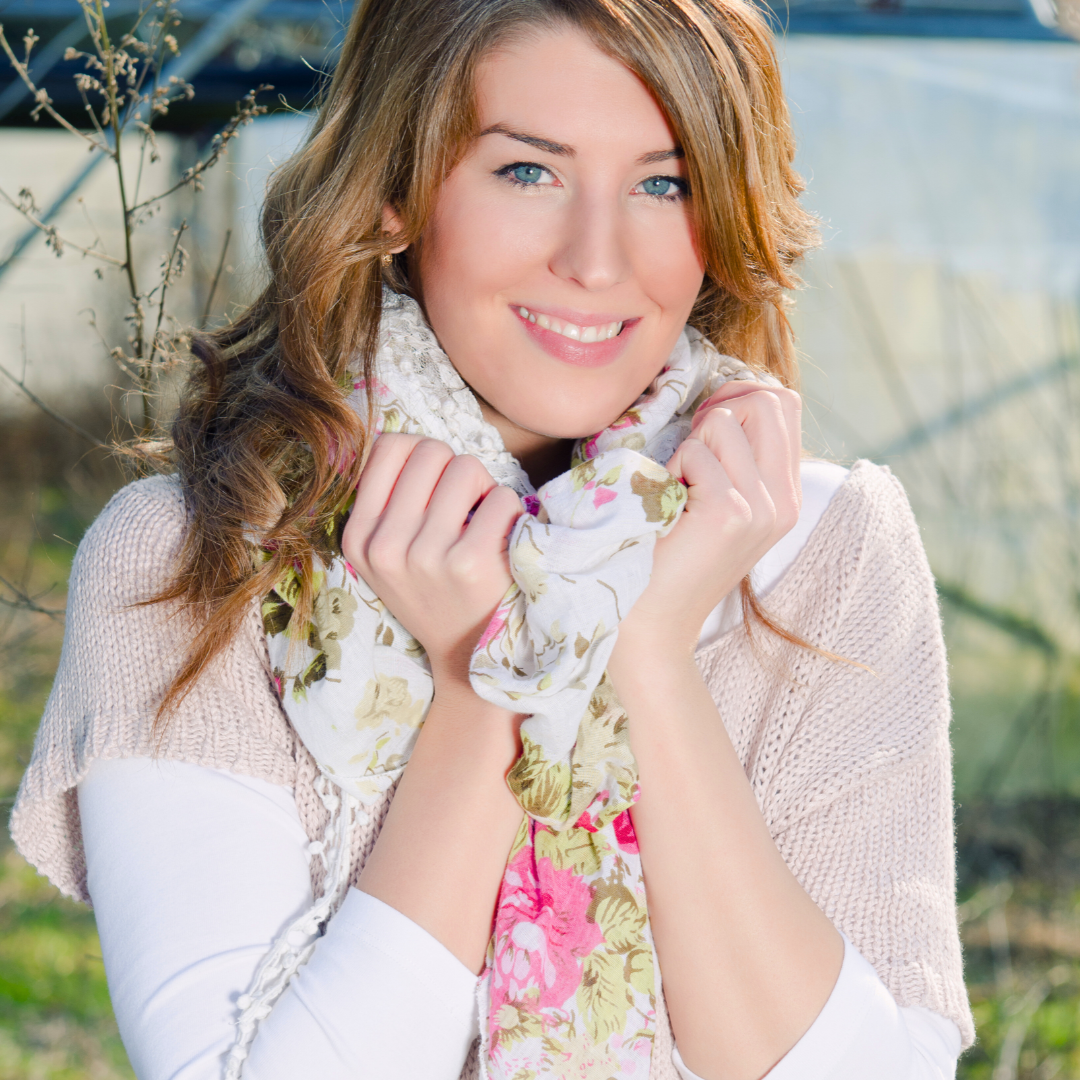
Kerry Campbell ponders her mother's humble influence, drawing parallels to the medieval artists and artisans who created architectural treasures.
My mom took a total of four flights in her lifetime, if you count the connections, and she was so very fearful each time. Providence to Atlanta to Phoenix to meet her first grandchild and back again, I’m not sure she ever would have agreed to fly for any other reason. So, when I traveled to Rome more than ten years after her passing, I brought my faithful Catholic mother’s floral-patterned scarf along with me, and I wore it to Mass at the Vatican. It was my way of bringing my mom to a place that she would not have even dreamed of visiting while she was alive, and I wrapped that scarf around me along with her memory as the light came pouring in.
While in Rome, we saw all manner of art in museums and churches and basilicas and more, massive tapestries which were created centuries before there was such a thing as a plane that would carry people across an ocean to see them, and as you look at these works of art and the ornate buildings in which they are housed, you can’t fathom the work these artists did, because they would have understood that the work would encompass many lifetimes' worth of labor. Each artisan took on the task while blindly trusting their contribution of time, energy, and talent toward an end result that most of them knew they would never see.
If you’re looking for art in the churches of Rome, it’s an embarrassment of riches, really; paintings and statues and tapestries from floor to the intricate ceilings like the one in the Sistine Chapel. It is almost too much to take in, honestly, but St. Clare’s Basilica in Assisi presents a distinct contrast. Used as a hospital during a time of plague in the 18th century, the frescos that tell her story were covered over, whitewashed as a guard against infection. And you could feel the difference as you walked into the space, her story whispering amid the booming stories of Peter, Paul, Francis and so many others in that city. And maybe it’s a difference that resonated with me because of how history tends to quiet the voices of women over time, but the clean white walls in Clare’s Basilica made me want to lean in and hear her story all the more. It was still there underneath that whitewash, after all, each fresco still preaching the truth of the life Clare lived, even if the story was covered in plaster.

We can never know the meaning or weight of our work while we’re doing it. In the span of history, it’s a rare artist who receives praise for their work in real time. As a writer, I am familiar with the much more common story of the small, person-to-person impact that comes from the things we make with our time, energy, and talent. And if that’s so, then the weight and meaning of a human life is even more nebulous. Who of us knows the impact of our presence, our kindness, our accomplishments, or the things we learn and teach and pass on to someone else?
As the Hamilton lyric goes, we have no control who lives, who dies, and who tells our story. And it’s also true that the interior experience of living a life may be a very different narrative indeed than what is said in our eulogy or obituary, or the story that someone else might one day tell. So, with all of these unanswered questions about how we might be remembered, just what is it that makes life worth living?
By the measure of the world, my mother, Anne, lived a small life. She was born in Boston and was raised by a single mother. She had a twin brother named John and a much older brother named George. My Mom married and had four daughters, all of whom got Irish names. She was active in the Church, started and ran her parish food pantry, and worked a few different jobs along the way. My mother liked gambling, DIY home projects, church bingo, going out for dinner, and she thought her grandchildren were “really cool.” My Mom met five out of six of those grandkids before she passed from ovarian cancer in November of 2012 at the age of 66, and her body was buried in her parish cemetery six tenths of a mile from her home. A small life, I guess you could say.

But my mother could not have known, just as we can’t know, how the threads from a human life continue after it, as we contribute our small, unique beauty to something much bigger than ourselves. She could not have seen how, in time, the things that we lovingly stitch into other people will be woven into and added onto and brought out into the light. When my mother bought that scarf which is patterned with a garden full of flowers and sewn through with golden threads, she could not have known that both it and her memory would one day cross an ocean, and that both would glimmer in the sunlight streaming into one of the grandest places in the world. And I’ll tell you one thing, my mother would be positively tickled by the idea that you are hearing her story right now. Who would have believed that?!
We can’t know the stories from our lives that may go untold or which may be painted over, but which will somehow still speak in ways that we can’t begin to understand now, whether it’s in the generations that follow, or in the things we make, or in the love we offer, but knowing that our unique contribution is an irreplaceable part of a grand tapestry that we may one day get to see is what makes me want to do my small part the very best I can, and to me, that makes life worth living.
Copyright 2023 Kerry Campbell
Images: Canva
About the Author

Kerry Campbell
Kerry Campbell is a Catholic-Christian preschool music teacher, church cantor, writer, full-time noticer, and Mom to two college students. She’s letting the details of her life inform her wider view in the suburbs of Boston, Massachusetts. She loves connecting with readers, so find her writing at MyLittleEpiphanies.com and please say hello!


.png?width=1806&height=731&name=CatholicMom_hcfm_logo1_pos_871c_2728c%20(002).png)
Comments